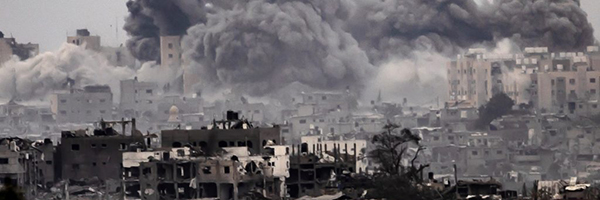The death toll of Israel’s war on Gaza reported by the Palestinian health ministry is accurate, according to two peer-reviewed studies by scientific experts published in top medical journal The Lancet.
As of December 18, Israel had killed 19,453 Palestinians in Gaza, the ministry reported. Two-thirds of the deaths were children (7,729) and women (5,153).
United Nations bodies, human rights organizations, and major media outlets have often used these statistics, because they have a history of being accurate.
“International organizations including the United Nations usually rely on these same figures as they are seen as the best available”, the Washington Post acknowledged.
“Many experts consider figures provided by the ministry reliable, given its access, sources and accuracy in past statements”, the prominent US newspaper wrote.
Israel has claimed, without any evidence, that Gaza’s health ministry is untrustworthy, because it is supposedly run by the political party Hamas. (In reality, the Gaza health ministry is partially funded by and linked to Hamas’ political rival, the Palestinian Authority, based in the Occupied West Bank.)
The US government has echoed Israel’s disinformation. President Joe Biden said in an October 25 press conference, “I have no notion that the Palestinians are telling the truth about how many people are killed… I have no confidence in the number that the Palestinians are using”.
Despite Biden’s criticism, HuffPost revealed that the US State Department uses the Palestinian health ministry figures in its own reports on Gaza.
In one of such memos, a US official acknowledged that, if anything, “The numbers are likely much higher, according to the UN and NGOs reporting on the situation”.
“No evidence of inflated mortality reporting from the Gaza Ministry of Health”
This was exactly the conclusion reached by scientific experts at Johns Hopkins University’s Bloomberg School of Public Health.
The peer-reviewed article “No evidence of inflated mortality reporting from the Gaza Ministry of Health”, published in leading medical journal The Lancet on December 6, noted that the Palestinian institution “has historically reported accurate mortality data”.
In past conflicts, discrepancies between Gaza Ministry of Health (MoH) data and independent United Nations figures were only between 1.5% and 3.8%.
Gaza MoH data were also quite similar to figures from Israel’s own Foreign Ministry, with a difference of just around 8%.
Scholars Benjamin Q Huynh, Elizabeth T Chin, and Paul B Spiegel wrote that they “found no evidence of inflated rates”.
“Assessments of Palestinian MoH data validity in the 2014 conflict had shown them to be accurate”
Scientific experts from the London School of Hygiene & Tropical Medicine came to a similar conclusion in their own peer-reviewed article in The Lancet, published on November 26.
For this previous study, scholars Zeina Jamaluddine, Francesco Checchi, and Oona M R Campbell reviewed death statistics from October 7 to 26, analyzing the list of 7028 deaths compiled by the Gaza Ministry of Health.
Out of the 7028 names, only one had a duplicated ID number, one had an implausible age, and just 281 lacked an ID number.
The experts concluded that the data were reasonable, writing, “We consider it implausible that these patterns would arise from data fabrication”.
They also reviewed MoH figures from previous wars in Gaza, and found them to be reliable.
“Assessments of Palestinian MoH data validity in the 2014 conflict had shown them to be accurate, and we saw no obvious reason to doubt the validity of the data between Oct 7 and Oct 26, 2023”, the scholars stated.
If anything, they concluded that the Gaza MoH figures may be rather conservative.
“The death reporting system currently being used by the Palestinian MoH was assessed in 2021, 2 years before the current war, and was found to under-report mortality by 13%”, they wrote, adding that “it is plausible that the current Palestinian MoH source also under-reports mortality because of the direct effect of the war on data capture and reporting, for example by omitting people whose bodies could not be recovered or brought to morgues”.

